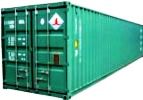| Mubychem Group, established in 1976, is the pioneer manufacturer of Tripotassium Phosphate or Potassium Phosphate Tribasic, Pharmaceutical, Fragrance & Flavor chemicals in India. Mubychem Group has several manufacturing facilities spread across Gujarat and Mumbai India and world wide contacts and toll manufacturers. We are exporting globally to countries like USA, Canada, Europe, UAE, South Africa, Tanzania, Kenya, Egypt, Nigeria, Uganda, Turkey, Mexico, Brazil, Chile, Argentina, Dubai etc. |
The participating units have one or more accreditations like FDA - GMP approval; ISO-9001 Certified; "REACH"registered; ISO-22000; Kosher Certified;Halal Certified; HACCP. We offer Pure & IP BP USP FCC Food Grade ACS AR Analytical Reagent Grades of Chemicals | |







Tripotassium Phosphate Potassium Phosphate Tribasic Manufacturers MSDS Sheet
Tribasic Potassium Phosphate CAS No.: 7778-53-2; Molecular Weight: 212;Chemical Formula: K3PO4
Dibasic Potassium Phosphate Dibasic Manufacturers BP USP NF Dipotassium Phosphate Manufacturers
Tribasic Potassium Phosphate Tribasic Manufacturers BP USP NF Tripotassium Phosphate Manufacturers
Tripotassium Phosphate
Technical & Pure Crystals Tri Potassium Phosphate
Tribasic Potassium Phosphate Tribasic
Also IP BP Ph. Eur. USP ACS AR LR FCC Food Grades

Tripotassium Phosphate MSDS Sheet, Material Safety Data Sheet Potassium Phosphate Tribasic
1. Product Identification
Synonyms: Phosphoric acid tripotassium salt; Tripotassium Phosphate, Tri Potassium Phosphate.
CAS No.: 7778-53-2
Molecular Weight: 212.27 (Anhydrous)
Chemical Formula: K3PO4 . nH2O
Ingredient: Tri Potassium Phosphate or Tribasic Potassium Phosphate or Tripotassium Phosphate or Potassium Phosphate Tribasic
CAS No.: 7778-53-2
Percent: 90 - 100%
Hazardous: Yes
3. Hazards Identification
Emergency Overview
WARNING! HARMFUL IF SWALLOWED OR INHALED. CAUSES IRRITATION TO SKIN, EYES AND RESPIRATORY TRACT.
Potential Health Effects
Inhalation: Tri Potassium Phosphate causes irritation to the respiratory tract. Symptoms may include coughing, shortness of breath.
Ingestion: Phosphates are slowly and incompletely absorbed when ingested, and seldom result in systemic effects. Such effects, however, have occurred. Symptoms may include vomiting, lethargy, diarrhea, blood chemistry effects, cardiac effects and central nervous system effects. The toxicity of phosphates is because of their ability to sequester calcium. Acute potassium intoxication by mouth is rare because large single doses usually induce vomiting and because in the absence of pre-existing kidney damage, potassium is rapidly excreted. Potassium poisoning can result in heart effects, change in respiration rate, tingling in the extremities, heaviness in the limbs, nausea and diarrhea.
Skin Contact: Tri Potassium Phosphate or Potassium Phosphate Tribasic causes irritation to skin. Symptoms include redness, itching, and pain.
Eye Contact: Tripotassium Phosphate causes irritation, redness, and pain.
Chronic Exposure: Tri Potassium Phosphate may sequester calcium and cause calcium phosphate deposits in the kidneys. Continued ingestion or absorption of phosphate and potassium can lead to renal disorders and in acute cases, potassium poisoning. The latter can involve circulatory complications, partial paralysis and ulcers of the stomach.
Aggravation of Pre-existing Conditions: Persons with pre-existing skin disorders or eye problems, or impaired liver, kidney or respiratory function may be more susceptible to the effects of Tripotassium Phosphate.
Inhalation: Remove to fresh air. If not breathing, give artificial respiration. If breathing is difficult, give oxygen. Get medical attention.
Ingestion: Induce vomiting immediately as directed by medical personnel. Never give anything by mouth to an unconscious person. Get medical attention.
Skin Contact: Immediately flush skin with plenty of water for at least 15 minutes. Remove contaminated clothing and shoes. Get medical attention. Wash clothing before reuse. Thoroughly clean shoes before reuse.
Eye Contact: Immediately flush eyes with plenty of water for at least 15 minutes, lifting lower and upper eyelids occasionally. Get medical attention immediately.
5. Fire Fighting Measures
Fire: Tri Potassium Phosphate is not considered to be a fire hazard.
Explosion: Tripotassium Phosphate is not considered to be an explosion hazard.
Fire Extinguishing Media: Use any means suitable for extinguishing surrounding fire for Tri Potassium Phosphate.
Special Information: In the event of a fire, wear full protective clothing and NIOSH-approved self-contained breathing apparatus with full face piece operated in the pressure demand or other positive pressure mode.
Ventilate area of leak or spill of Tripotassium Phosphate. Wear appropriate personal protective equipment as specified in Section 8. Spills: Sweep up and containerize for reclamation or disposal. Vacuuming or wet sweeping may be used to avoid dust dispersal.
7. Handling and Storage
Keep Tri Potassium Phosphate in a tightly closed container, stored in a cool, dry, ventilated area. Protect Tri Potassium Phosphate against physical damage. Containers of Tripotassium Phosphate may be hazardous when empty since they retain product residues (dust, solids); observe all warnings and precautions listed for the product.
8. Exposure Controls/Personal Protection
Airborne Exposure Limits: None established for Tripotassium Phosphate.
Ventilation System: A system of local and/or general exhaust is recommended to keep employee exposures as low as possible to Tripotassium Phosphate. Local exhaust ventilation is generally preferred because it can control the emissions of the contaminant at its source, preventing dispersion of it into the general work area. Please refer to the ACGIH document, Industrial Ventilation, A Manual of Recommended Practices, most recent edition, for details.
Personal Respirators (NIOSH Approved): For conditions of use where exposure to dust or mist of Tripotassium Phosphate is apparent and engineering controls are not feasible, a particulate respirator (NIOSH type N95 or better filters) may be worn. If oil particles (e.g. lubricants, cutting fluids, glycerin, etc.) are present, use a NIOSH type R or P filter. For emergencies or instances where the exposure levels are not known, use a full-face positive-pressure, air-supplied respirator. WARNING: Air-purifying respirators do not protect workers in oxygen-deficient atmospheres.
Skin Protection: Wear impervious protective clothing, including boots, gloves, lab coat, apron or coveralls, as appropriate, to prevent skin contact.
Eye Protection: Use chemical safety goggles and/or full face shield where dusting or splashing of solutions is possible. Maintain eye wash fountain and quick-drench facilities in work area.
9. Physical and Chemical Properties
Appearance: Tri Potassium Phosphate is white powder.
Odor: Tripotassium Phosphate is odorless.
Solubility: Tri Potassium Phosphate is soluble 50 grams in 100 grams of water.
Specific Gravity: 2.564 @ 17C/4C
pH: Strongly alkaline.
% Volatiles by volume @ 21C (70F): 0
Boiling Point: Not applicable.
Melting Point: ca. 1340C (ca. 2444F)
Vapor Density (Air=1): No information found.
Vapor Pressure (mm Hg): No information found.
Evaporation Rate (BuAc=1): No information found.
10. Stability and Reactivity
Stability: Tribasic Potassium Phosphate is stable under ordinary conditions of use and storage.
Hazardous Decomposition Products: Phosphorus oxides may form when heated to decomposition.
Hazardous Polymerization: Will not occur for Potassium Phosphate Tribasic.
Incompatibilities: Acidic materials.
Conditions to Avoid: Incompatibles.
No LD50/LC50 information found relating to normal routes of occupational exposure.
12. Ecological Information
Environmental Fate: No information found.
Environmental Toxicity: No information found.
13. Disposal Considerations
Whatever cannot be saved for recovery or recycling should be managed in an appropriate and approved waste disposal facility. Processing, use or contamination of this product may change the waste management options. State and local disposal regulations may differ from federal disposal regulations. Dispose container and unused contents in accordance with federal, state and local requirements.
14. Transport Information
Not regulated.
15. Regulatory Information
Chemical Weapons Convention: No; TSCA 12(b): No; CDTA: No
SARA 311/312: Acute: Yes; Chronic: No; Fire: No; Pressure: No
Reactivity: No (Pure / Solid)
Australian Hazchem Code: None allocated.
Poison Schedule: S5
OSHA: Hazardous by definition of Hazard Communication Standard (29 CFR 1910.1200).
WHMIS (Canada): CLASS D-2A: Material causing other toxic effects (VERY TOXIC).
DSCL (EEC): R38- Irritating to skin. R41- Risk of serious damage to eyes.
HMIS (U.S.A.):
Health Hazard: 2
Fire Hazard: 0
Reactivity: 0
Personal Protection: E
National Fire Protection Association (U.S.A.):
Health: 2
Flammability: 0
Reactivity: 0
Specific hazard:
Protective Equipment:
Gloves. Lab coat. Dust respirator. Be sure to use an approved/certified respirator or equivalent. Wear appropriate respirator when ventilation is inadequate. Splash goggles.
16. Other Information
Disclaimer:
******************************
Our company provides this TRIPOTASSIUM PHOSPHATE TRIBASIC, MSDS or TRI POTASSIUM PHOSPHATE MSDS information sheet contained herein in good faith but makes no representation as to its comprehensiveness or accuracy. This TRI POTASSIUM PHOSPHATE TRIBASIC, MSDS or TRIPOTASSIUM PHOSPHATE MSDS sheet is intended only as a guide to the appropriate precautionary handling of the material by a properly trained person using this product. Individuals receiving the information must exercise their independent judgment in determining its appropriateness for a particular purpose.
******************************
Tribasic Potassium Phosphate Manufacturers
Potassium Phosphate Tribasic Manufacturers
Tripotassium Phosphate manufacturers:
MUBYCHEM GROUP
CHINCHBUNDER, MUMBAI 400009, INDIA
TEL: (OFFICE) 91-22-23774610, 91-22- 23723564. 91-22-23728264
e-mail: anmol@pcmenergy.com

Copyright and Usual Disclaimer is Applicable.
Global or International Tribasic Potassium Phosphate Tribasic or Tripotassium Phosphate BP USP NF ACS FCC Food Grade Suppliers, Exporters, Importers, Manufacturers
If I give you “My Word” Nobody can undo it.
If I sign an “Agreement” my Lawyer will undo it
Perfection is made up of small thing but it is not small.
